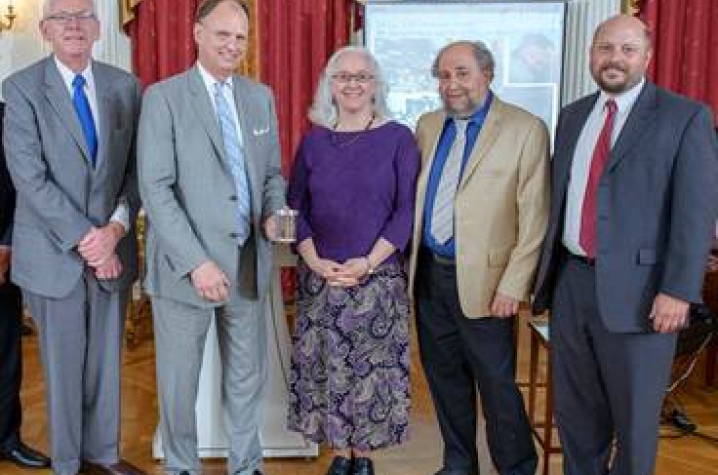They Preserve the Past for the Future

LEXINGTON, Ky. (June 4, 2014) — This year’s Ida Lee Willis Memorial Award for outstanding commitment to historic preservation is being presented to not one, but two of the most dedicated preservationists and archaeologists working in the Commonwealth, University of Kentucky Adjunct Assistant Professors A. Gwynn Henderson and David Pollack. No two people could better represent the mission and meaning of this award. Not coincidentally, they also happen to be married.
Henderson is the education coordinator for the Kentucky Archaeological Survey, a joint partnership between the Kentucky Heritage Council and the UK Department of Anthropology. Pollack is director of the Kentucky Archaeological Survey, and for many years served a dual role as director of KAS and as staff archaeologist, review coordinator and site protection program manager for the Kentucky Heritage Council. Both are also adjunct assistant professors in the Department of Anthropology at UK.
Although neither is a native of Kentucky, it would seem you cannot think of an aspect of Kentucky archaeology in the past 30 years in which one or both of them didn’t have some kind of involvement.
Individually, Henderson has prepared archaeology-related content for teacher activity guides, worked on a traveling exhibit about Kentucky archaeology, and developed and administered two programs: the Kentucky Archaeological Registry, a landowner site protection program; and the Kentucky Archaeology Education Network, which serves as a clearinghouse of information for teachers and educators.
Her book, “Kentuckians Before Boone,” is likely responsible for more people being aware of Native American presence in the Commonwealth and debunking the “Myth of the Dark and Bloody Ground” than any other single publication.
Pollack has served as the director of the Kentucky Archaeological Survey since its inception in 1995. In this capacity, he has also provided employment and research opportunities for numerous undergraduate and graduate students at UK, offering practical field experience and training. Through KAS, Pollack has been able to mobilize cost-effective efforts to assist state agencies and local governments in their compliance with state laws protecting archaeological sites and cemeteries — and improving our understanding of Kentucky’s past in the process.
Among the most noteworthy of such projects — Frankfort’s forgotten cemetery, the many unmarked graves on the grounds of Eastern State Hospital and the Kentucky Horse Park in Lexington, and the incredible site along Highway 61 in Cumberland County with evidence of occupation that spans nearly the entirety of human presence in Kentucky.
Pollack was also the lead in developing a Geographical Information Systems (GIS) database for archaeological sites and historic structures throughout Kentucky, which has helped correct errors in the collection of data and recording of sites, and greatly facilitated the way archaeology is conducted.
One of the most important legacies Henderson and Pollack have imparted to Kentucky preservation was borne out of a terrible travesty — the organized looting of hundreds of Native American graves by a few unscrupulous individuals at the Slack Farm site in Union County in 1987. Once the looters were stopped by law enforcement, archaeologists and a group of more than 500 local volunteers — organized by Henderson and Pollack — participated in a massive recovery effort to glean as much useful data from this important site as possible. These efforts resulted in a booklet written by Pollack, Henderson and Cheryl Munson of Indiana University-Bloomington, “Slack Farm and the Caborn-Welborn People,” as well as strengthened state laws regulating the looting of burial sites.
In addition to many other publications, Henderson and Pollack have worked with others to research, write and produce a series of videos through the Kentucky Archaeology and Heritage Video Series. Collectively, their work has greatly influenced and changed what we now know about Kentucky’s prehistoric Native American cultures as well as our more recent past.




